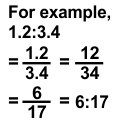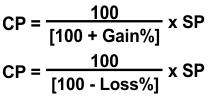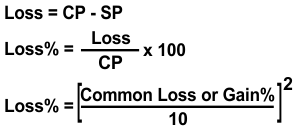
Gurukul of Excellence
Classes for Physics, Chemistry and Mathematics by IITians
Join our Telegram Channel for Free PDF Download

Case Study Questions for Class 8 Maths
- Last modified on: 8 months ago
- Reading Time: 7 Minutes

Table of Contents
Here in this article, we are providing case study questions for class 8 maths.
Maths Class 8 Chapter List
Latest chapter list (2023-24).
Chapter 1 Rational Numbers Chapter 2 Linear Equations in One Variable Chapter 3 Understanding Quadrilaterals Chapter 4 Data Handling Chapter 5 Squares and Square Roots Chapter 6 Cubes and Cube Roots Chapter 7 Comparing Quantities Chapter 8 Algebraic Expressions and Identities Chapter 9 Mensuration Chapter 10 Exponents and Powers Chapter 11 Direct and Indirect proportions Chapter 12 Factorisation Chapter 13 Introduction to Graphs
Old Chapter List
Chapter 1 Rational Numbers Chapter 2 Linear Equations in One Variable Chapter 3 Understanding Quadrilaterals Chapter 4 Practical Geometry Chapter 5 Data Handling Chapter 6 Squares and Square Roots Chapter 7 Cubes and Cube Roots Chapter 8 Comparing Quantities Chapter 9 Algebraic Expressions and Identities Chapter 10 Visualising Solid Shapes Chapter 11 Mensuration Chapter 12 Exponents and Powers Chapter 13 Direct and Indirect proportions Chapter 14 Factorisation Chapter 15 Introduction to Graphs Chapter 16 Playing with Numbers
Tips for Answering Case Study Questions for Class 8 Maths in Exam

1. Comprehensive Reading for Context: Prioritize a thorough understanding of the provided case study. Absorb the contextual details and data meticulously to establish a strong foundation for your solution.
2. Relevance Identification: Pinpoint pertinent mathematical concepts applicable to the case study. By doing so, you can streamline your thinking process and apply appropriate methods with precision.
3. Deconstruction of the Problem: Break down the complex problem into manageable components or steps. This approach enhances clarity and facilitates organized problem-solving.
4. Highlighting Key Data: Emphasize critical information and data supplied within the case study. This practice aids quick referencing during the problem-solving process.
5. Application of Formulas: Leverage pertinent mathematical formulas, theorems, and principles to solve the case study. Accuracy in formula selection and unit usage is paramount.
6. Transparent Workflow Display: Document your solution with transparency, showcasing intermediate calculations and steps taken. This not only helps track progress but also offers insight into your analytical process.
7. Variable Labeling and Definition: For introduced variables or unknowns, offer clear labels and definitions. This eliminates ambiguity and reinforces a structured solution approach.
8. Step Explanation: Accompany each step with an explanatory note. This reinforces your grasp of concepts and demonstrates effective application.
9. Realistic Application: When the case study pertains to real-world scenarios, infuse practical reasoning and logic into your solution. This ensures alignment with real-life implications.
10. Thorough Answer Review: Post-solving, meticulously review your answer for accuracy and coherence. Assess its compatibility with the case study’s context.
11. Solution Recap: Before submission, revisit your solution to guarantee comprehensive coverage of the problem and a well-organized response.
12. Previous Case Study Practice: Boost your confidence by practicing with past case study questions from exams or textbooks. This familiarity enhances your readiness for the question format.
13. Efficient Time Management: Strategically allocate time for each case study question based on its complexity and the overall exam duration.
14. Maintain Composure and Confidence: Approach questions with poise and self-assurance. Your preparation equips you to conquer the challenges presented.
Download CBSE Books
Exam Special Series:
- Sample Question Paper for CBSE Class 10 Science (for 2024)
- Sample Question Paper for CBSE Class 10 Maths (for 2024)
- CBSE Most Repeated Questions for Class 10 Science Board Exams
- CBSE Important Diagram Based Questions Class 10 Physics Board Exams
- CBSE Important Numericals Class 10 Physics Board Exams
- CBSE Practical Based Questions for Class 10 Science Board Exams
- CBSE Important “Differentiate Between” Based Questions Class 10 Social Science
- Sample Question Papers for CBSE Class 12 Physics (for 2024)
- Sample Question Papers for CBSE Class 12 Chemistry (for 2024)
- Sample Question Papers for CBSE Class 12 Maths (for 2024)
- Sample Question Papers for CBSE Class 12 Biology (for 2024)
- CBSE Important Diagrams & Graphs Asked in Board Exams Class 12 Physics
- Master Organic Conversions CBSE Class 12 Chemistry Board Exams
- CBSE Important Numericals Class 12 Physics Board Exams
- CBSE Important Definitions Class 12 Physics Board Exams
- CBSE Important Laws & Principles Class 12 Physics Board Exams
- 10 Years CBSE Class 12 Chemistry Previous Year-Wise Solved Papers (2023-2024)
- 10 Years CBSE Class 12 Physics Previous Year-Wise Solved Papers (2023-2024)
- 10 Years CBSE Class 12 Maths Previous Year-Wise Solved Papers (2023-2024)
- 10 Years CBSE Class 12 Biology Previous Year-Wise Solved Papers (2023-2024)
- ICSE Important Numericals Class 10 Physics BOARD Exams (215 Numericals)
- ICSE Important Figure Based Questions Class 10 Physics BOARD Exams (230 Questions)
- ICSE Mole Concept and Stoichiometry Numericals Class 10 Chemistry (65 Numericals)
- ICSE Reasoning Based Questions Class 10 Chemistry BOARD Exams (150 Qs)
- ICSE Important Functions and Locations Based Questions Class 10 Biology
- ICSE Reasoning Based Questions Class 10 Biology BOARD Exams (100 Qs)
✨ Join our Online JEE Test Series for 499/- Only (Web + App) for 1 Year
✨ Join our Online NEET Test Series for 499/- Only for 1 Year
1 thought on “ Case Study Questions for Class 8 Maths ”
- Pingback: Case Study Questions for CBSE Class 8 Maths - ebookpublisher.in
Leave a Reply Cancel reply
Join our Online Test Series for CBSE, ICSE, JEE, NEET and Other Exams

Editable Study Materials for Your Institute - CBSE, ICSE, State Boards (Maharashtra & Karnataka), JEE, NEET, FOUNDATION, OLYMPIADS, PPTs
Discover more from Gurukul of Excellence
Subscribe now to keep reading and get access to the full archive.
Type your email…
Continue reading
- New QB365-SLMS
- NEET Materials
- JEE Materials
- Banking first yr Materials
- TNPSC Materials
- DIPLOMA COURSE Materials
- 5th Standard Materials
- 12th Standard Materials
- 11th Standard Materials
- 10th Standard Materials
- 9th Standard Materials
- 8th Standard Materials
- 7th Standard Materials
- 6th Standard Materials
- 12th Standard CBSE Materials
- 11th Standard CBSE Materials
- 10th Standard CBSE Materials
- 9th Standard CBSE Materials
- 8th Standard CBSE Materials
- 7th Standard CBSE Materials
- 6th Standard CBSE Materials
- Tamilnadu Stateboard
- Scholarship Exams
- Scholarships

CBSE 8th Standard CBSE all question papers, important notes , study materials , Previuous Year questions, Syllabus and exam patterns. Free 8th Standard CBSE all books and syllabus online. Practice Online test for free in QB365 Study Material. Important keywords, Case Study Questions and Solutions. Updates about latest education news and Scholorships in one place.
8th Standard CBSE Subjects
8th standard cbse study materials.


Class VI to XII
Tn state board / cbse, 3000+ q&a's per subject, score high marks.

Latest CBSE 8th Standard CBSE Study Material Updates
ebookpublisher.in
Case Study Questions for CBSE Class 8 Maths
Here we are providing case study questions for CBSE Class 8 Maths. The list of chapters is given below. Student can access the question by clicking on the chapter link.
Chapter List
Chapter 1 Rational Numbers Chapter 2 Linear Equations in One Variable Chapter 3 Understanding Quadrilaterals Chapter 4 Practical Geometry Chapter 5 Data Handling Chapter 6 Squares and Square Roots Chapter 7 Cubes and Cube Roots Chapter 8 Comparing Quantities Chapter 9 Algebraic Expressions and Identities Chapter 10 Visualising Solid Shapes Chapter 11 Mensuration Chapter 12 Exponents and Powers Chapter 13 Direct and Indirect proportions Chapter 14 Factorisation Chapter 15 Introduction to Graphs Chapter 16 Playing with Numbers
Deleted Chapter for Session 2023-24
Chapter 4, Chapter 10 and Chapter 16 are not in syllabus for session 2023-24.
What are Case Study Questions in CBSE Class 8 Maths?
Case based questions are questions that require students to analyze a hypothetical situation or scenario. These types of questions are designed to test a student’s ability to apply their knowledge and understanding of a particular topic to a real-life situation.
How to Solve Case Study Questions for CBSE Class 8 Maths?
To tackle Case Study-Based Questions in Class 8 Maths, students need to carefully observe and analyze the provided information or data. When approaching these questions, it’s crucial to read the passage thoroughly and then proceed to solve them.
When dealing with Class 8 Maths Case Study questions, an effective strategy is to identify and highlight key information or given data. This practice will prove beneficial when formulating the final answers.
A Case Study in Class 8 Maths usually consists of 4 to 5 questions that are answered in a multiple-choice question (MCQ) format. While addressing these MCQs, it’s advisable for students to closely read the paragraph, as it might contain hints related to the discussed topics.
Prior to solving Case Study type questions, it’s recommended to refer to the CBSE Syllabus. This helps in revisiting and reinforcing previous learnings, enhancing preparation and confidence.
By following these simple yet effective steps, students can approach Class 8 Maths Case Study questions with a clearer understanding and better problem-solving skills. This approach not only aids in academic success but also contributes to a deeper grasp of mathematical concepts.
Understanding Case Study Questions in CBSE Class 8 Maths
Case study questions have emerged as a dynamic and engaging approach within the CBSE Class 8 Maths curriculum. These questions deviate from traditional problem-solving by presenting students with real-world scenarios that require the application of mathematical concepts. In essence, case study questions bridge the gap between theoretical knowledge and practical application, fostering a deeper understanding of mathematics.
Exploring the Concept of Case Study Questions
Case study questions involve presenting students with contextualized problems that mimic situations they might encounter in their daily lives. These scenarios are designed to challenge students to think critically, analyze data, and formulate solutions using mathematical principles. By immersing students in such scenarios, educators aim to nurture their ability to solve complex problems in various contexts.
Importance of Case Study Questions in Mathematics Learning
The significance of case study questions lies in their ability to cultivate practical problem-solving skills. Unlike traditional exercises that often focus solely on mathematical manipulation, case studies require students to apply their knowledge to authentic situations. This application not only enhances their comprehension of mathematical concepts but also equips them with valuable life skills, as they learn to approach challenges systematically and logically.
How Case Study Questions Differ from Traditional Problems
The fundamental distinction between case study questions and conventional math problems lies in their context-driven nature. While traditional problems tend to be abstract and formulaic, case study questions introduce variables, uncertainty, and real-world relevance. This dynamic approach encourages students to think multidimensionally, as they must consider factors beyond the mathematical equations themselves.
Benefits of Using Case Study Questions for CBSE Class 8 Maths
The adoption of case study questions in CBSE Class 8 Maths curriculum brings forth a multitude of benefits that extend beyond traditional teaching methods. These advantages stem from the unique nature of case study questions, which encourage active engagement, real-world application, and the development of analytical skills.
Fostering Critical Thinking and Problem-Solving Skills
Case study questions compel students to approach problems from various angles, dissecting complex scenarios and extracting pertinent information. This process cultivates critical thinking by encouraging students to analyze, evaluate, and synthesize data to arrive at well-considered solutions. By navigating through intricate case studies, students hone their ability to tackle multifaceted problems that mirror real-life challenges.
Real-world Application of Mathematical Concepts
One of the paramount advantages of case study questions is their relevance to everyday situations. Students encounter mathematical concepts in action, witnessing firsthand how these principles are embedded in various scenarios. This exposure not only deepens their understanding of theoretical concepts but also helps them appreciate the practical utility of mathematics in diverse contexts.
Enhancing Analytical Abilities through Practical Scenarios
Case study questions promote the development of analytical skills by requiring students to interpret data, identify patterns, and derive meaningful insights. As students engage with intricate case studies, they refine their ability to discern crucial information from irrelevant details, strengthening their capacity to make informed decisions—a skill applicable not only in mathematics but also in various aspects of life.
Leave a Comment Cancel reply
Save my name, email, and website in this browser for the next time I comment.
- School Solutions
- Star Program
- NCERT Solutions Class 12 Maths
- NCERT Solutions Class 12 Physics
- NCERT Solutions Class 12 Chemistry
- NCERT Solutions Class 12 Biology
- NCERT Solutions Class 12 Commerce
- NCERT Solutions Class 12 Economics
- NCERT Solutions Class 12 Accountancy
- NCERT Solutions Class 12 English
- NCERT Solutions Class 12 Hindi
- NCERT Solutions Class 11 Maths
- NCERT Solutions Class 11 Physics
- NCERT Solutions Class 11 Chemistry
- NCERT Solutions Class 11 Biology
- NCERT Solutions Class 11 Commerce
- NCERT Solutions Class 11 Accountancy
- NCERT Solutions Class 11 English
- NCERT Solutions Class 11 Hindi
- NCERT Solutions Class 11 Statistics
- NCERT Solutions Class 10 Maths
- NCERT Solutions Class 10 Science
- NCERT Solutions Class 10 English
- NCERT Solutions Class 10 Hindi
- NCERT Solutions Class 10 Social Science
- NCERT Solutions Class 9 Maths
- NCERT Solutions Class 9 Science
- NCERT Solutions Class 9 English
- NCERT Solutions Class 9 Hindi
- NCERT Solutions Class 9 Social Science
- NCERT Solutions Class 8 Maths
- NCERT Solutions Class 8 Science
- NCERT Solutions Class 8 English
- NCERT Solutions Class 8 Hindi
- NCERT Solutions Class 8 Social Science
- NCERT Solutions Class 7 Maths
- NCERT Solutions Class 7 Science
- NCERT Solutions Class 7 English
- NCERT Solutions Class 7 Hindi
- NCERT Solutions Class 7 Social Science
- NCERT Solutions Class 6 Maths
- NCERT Solutions Class 6 Science
- NCERT Solutions Class 6 English
- NCERT Solutions Class 6 Hindi
- NCERT Solutions Class 6 Social Science
- NCERT Solutions Class 5 Maths
- NCERT Solutions Class 5 English
- NCERT Solutions Class 5 EVS
- NCERT Solutions Class 4 Maths
- NCERT Solutions Class 4 English
- NCERT Solutions Class 4 EVS
- NCERT Solutions Class 4 Hindi
- NCERT Solutions Class 3 Maths
- NCERT Solutions Class 3 English
- NCERT Solutions Class 3 EVS
- NCERT Solutions Class 3 Hindi
- NCERT Solutions Class 2 Maths
- NCERT Solutions Class 2 English
- NCERT Solutions Class 2 Hindi
- NCERT Solutions Class 1 Maths
- NCERT Solutions Class 1 English
- NCERT Solutions Class 1 Hindi
- NCERT Books Class 12
- NCERT Books Class 11
- NCERT Books Class 10
- NCERT Books Class 9
- NCERT Books Class 8
- NCERT Books Class 7
- NCERT Books Class 6
- NCERT Books Class 5
- NCERT Books Class 4
- NCERT Books Class 3
- NCERT Books Class 2
- NCERT Books Class 1
- Important Questions Class 12
- Important Questions Class 11
- Important Questions Class 10
- Important Questions Class 9
- Important Questions Class 8
- Important Questions Class 7
- important questions class 6
- CBSE Class 12 Revision Notes
- CBSE Class 11 Revision Notes
- CBSE Class 10 Revision Notes
- CBSE Class 9 Revision Notes
- CBSE Class 8 Revision Notes
- CBSE Class 7 Revision Notes
- CBSE Class 6 Revision Notes
- CBSE Class 12 Syllabus
- CBSE Class 11 Syllabus
- CBSE Class 10 Syllabus
- CBSE Class 9 Syllabus
- CBSE Class 8 Syllabus
- CBSE Class 7 Syllabus
- CBSE Class 6 Syllabus
- CBSE Class 5 Syllabus
- CBSE Class 4 Syllabus
- CBSE Class 3 Syllabus
- CBSE Class 2 Syllabus
- CBSE Class 1 Syllabus
- CBSE Sample Question Papers For Class 12
- CBSE Sample Question Papers For Class 11
- CBSE Sample Question Papers For Class 10
- CBSE Sample Question Papers For Class 9
- CBSE Sample Question Papers For Class 8
- CBSE Sample Question Papers For Class 7
- CBSE Sample Question Papers For Class 6
- CBSE Sample Question Papers For Class 5
- CBSE Sample Question Papers For Class 4
- CBSE Sample Question Papers For Class 3
- CBSE Sample Question Papers For Class 2
- CBSE Sample Question Papers For Class 1
- CBSE Previous Year Question Papers Class 12
- CBSE Previous Year Question Papers Class 10
- Extra Questions For Class 8 Maths
- Extra Questions For Class 8 Science
- Extra Questions For Class 9 Maths
- Extra Questions For Class 9 Science
- Extra Questions For Class 10 Maths
- Extra Questions For Class 10 Science
- NEET 2021 Question Paper
- NEET 2020 Question Paper
- NEET 2019 Question Paper
- NEET 2018 Question Paper
- NEET 2017 Question Paper
- NEET 2016 Question Paper
- NEET 2015 Question Paper
- NEET Physics Questions
- NEET Chemistry Questions
- NEET Biology Questions
- NEET Sample Papers
- NEET Physics Syllabus
- NEET Chemistry Syllabus
- NEET Biology Syllabus
- NEET Mock Test
- NEET Eligibility Criteria
- JEE Main 2021 Question Paper
- JEE Main 2020 Question Paper
- JEE Main 2019 Question Paper
- JEE Main 2018 Question Paper
- JEE Main 2017 Question Paper
- JEE Main 2016 Question Paper
- JEE Main 2015 Question Paper
- JEE Main Sample Papers
- JEE Main Physics Syllabus
- JEE Main Chemistry Syllabus
- JEE Main Maths Syllabus
- JEE Main Physics Questions
- JEE Main Chemistry Questions
- JEE Main Maths Questions
- JEE main revision notes
- JEE Main Mock Test
- JEE Advanced Physics Questions
- JEE Advanced Chemistry Questions
- JEE Advanced Maths Questions
- JEE Advanced 2021 Question Paper
- JEE Advanced 2020 Question Paper
- JEE Advanced 2019 Question Paper
- JEE Advanced 2018 Question Paper
- JEE Advanced 2017 Question Paper
- JEE Advanced 2016 Question Paper
- JEE Advanced 2015 Question Paper
- JEE Advanced Physics Syllabus
- JEE Advanced Chemistry Syllabus
- JEE Advanced Maths Syllabus
- JEE Advanced Mock Test
- ISC Class 12 Syllabus
- ISC Class 11 Syllabus
- ICSE Class 10 Syllabus
- ICSE Class 9 Syllabus
- ICSE Class 8 Syllabus
- ICSE Class 7 Syllabus
- ICSE Class 6 Syllabus
- ISC Sample Question Papers for Class 12
- ISC Sample Question Papers for Class 11
- ICSE Sample Question Papers for Class 10
- ICSE Sample Question Papers for Class 9
- ICSE Sample Question Papers for Class 8
- ICSE Sample Question Papers for Class 7
- ICSE Sample Question Papers for Class 6
- ICSE Class 10 Revision Notes
- ICSE Class 9 Revision Notes
- ISC Important Questions for Class 12
- ISC Important Questions for Class 11
- ICSE Important Questions for Class 10
- ICSE Important Questions for Class 9
- ICSE Important Questions for Class 8
- ICSE Important Questions for Class 7
- ICSE Important Questions for Class 6
- ISC Class 12 Question Paper
- ICSE Class 10 Question Paper
- Maharashtra Board Syllabus
- Maharashtra Board Sample Question Paper
- Maharashtra Board Previous Year Question Paper
- AP Board Syllabus
- AP Board Sample Question Paper
- AP Board Previous Year Question Paper
- Tamilnadu Board Syllabus
- Tamilnadu Board Sample Question Paper
- Tamilnadu Board Previous Year Question Paper
- Telangana Board Syllabus
- Telangana Board Sample Question Paper
- Telangana Board Previous Year Question Paper
- Karnataka Board Syllabus
- Karnataka Board Sample Question Paper
- Karnataka Board Previous Year Question Paper
- Examination Full Forms
- Physics Full Forms
- Chemistry Full Forms
- Biology Full Forms
- Educational Full Form
- CUET Eligibility Criteria
- CUET Exam Pattern
- CUET Cutoff
- CUET Syllabus
- CUET Admit Card
- CUET Counselling
- CUET Previous Year Question Papers
- CUET Application Form
- CUET Sample Papers
- CUET Exam Centers
- CUET Exam Dates
- CUET Results
- Physics Formulas
- Chemistry Formulas
- Math Formulas
- Algebra Formulas
- Geometry Formulas
- Trigonometry Formulas
- Subscription
Important Questions for CBSE Class 8 Maths 2023-24
Home » CBSE » Important Questions for CBSE Class 8 Maths 2023-24

- CBSE Important Questions
- Important Questions Class 6
- CBSE Previous Year Question Papers
- CBSE Revision Notes
- CBSE Syllabus
- CBSE Extra Questions
- CBSE Sample Papers
- ISC & ICSE Syllabus
- ICSE Syllabus Class 9
- ICSE Syllabus Class 8
- ICSE Syllabus Class 7
- ICSE Syllabus Class 6
- ICSE Syllabus Class 10
- ICSE Question Paper
- ICSE Sample Question Papers
- ISC Sample Question Papers For Class 12
- ISC Sample Question Papers For Class 11
- ICSE Sample Question Papers For Class 10
- ICSE Sample Question Papers For Class 9
- ICSE Sample Question Papers For Class 8
- ICSE Sample Question Papers For Class 7
- ICSE Sample Question Papers For Class 6
- ICSE Revision Notes
- ICSE Important Questions
- ISC Important Questions For Class 12
- ISC Important Questions For Class 11
- ICSE Important Questions For Class 10
- ICSE Important Questions For Class 9
- ICSE Important Questions For Class 8
- ICSE Important Questions For Class 7
- ICSE Important Questions For Class 6
- Maharashtra board
- Rajasthan-Board
- Andhrapradesh Board
- AP Board syllabus
- Telangana Board
- Tamilnadu Board
- Tamilnadu Sample Question Paper
- Tamilnadu Syllabus
- Tamilnadu Previous Year Question Paper
- NCERT Solutions Class 12
- NCERT Solutions Class 10
- NCERT Solutions Class 11
- NCERT Solutions Class 9
- NCERT Solutions Class 8
- NCERT Solutions Class 7
- NCERT Solutions Class 6
- NCERT Solutions Class 5
- NCERT Solutions Class 4
- NCERT Solutions Class 3
- NCERT Solutions Class 2
- NCERT Solutions Class 1
- JEE Main Question Papers
- JEE Main Syllabus
- JEE Main Questions
- JEE Main Revision Notes
- JEE Advanced Question Papers
- JEE Advanced Syllabus
- JEE Advanced Questions
- JEE Advanced Sample Papers
- NEET Question Papers
- Neet 2021 Question Paper
- Neet 2020 Question Paper
- Neet 2019 Question Paper
- Neet 2018 Question Paper
- Neet 2017 Question Paper
- Neet 2016 Question Paper
- Neet 2015 Question Paper
- NEET Syllabus

Maths Important Questions for Class 8
Maths is a vast subject. The concept students learn in the lower classes helps in developing skills for higher classes. Thus, solving important questions for class 8 Maths helps students to score good marks.
Quick Links
Class 8 Maths gives the student a chapter-wise plan to prepare the student for the CBSE class 8 examination. Important questions for class 8 Maths will help the students with practice for exam preparation. The questions are prepared by expert teachers of the subject so that all the topics and concepts are covered.
The important questions for class 8 Mathes will help students to gauge their understanding of the major concepts that are taught in class 8 Maths. By practising them, students will get an idea of what type of questions will be asked in the exam. Solving the important questions of Maths for class 8 CBSE will help students understand the concept well.
To access the important questions for class 8 Maths, students may register at Extramarks.
Class 8 Maths Important Questions – Chapters Covered
There are 16 Chapters and sub-topics that have important questions for class 8 Maths. The list here is created as per the NCERT books and the latest CBSE syllabus and is mentioned below.
Chapter 1: Rational Numbers
Rational numbers are the numbers that can be represented in the form of p/q, where p and q are integers, and q is not equal to 0.
- Ex 1.1 Introduction to Rational Numbers
- Ex 1.2 Properties of Rational Numbers
- Ex 1.3 Representation of Rational Numbers on the Number Line
- Ex 1.4 Rational Numbers between Two Rational Numbers
Chapter 2: Linear Equations in One Variable
Linear equations in one variable are algebraic expressions that have only one variable.
- Ex 2.1 Introduction to Linear Equations in One Variable
- Ex 2.2 Solving Equations which have Linear Expressions on one Side and Numbers on the Other Side
- Ex 2.3 Some Applications
- Ex 2.4 Solving Equations having the Variable on Both Sides
- Ex 2.5 Some More Applications
- Ex 2.6 Reducing Equations to Simpler Form
- Ex 2.7 Equations Reducible to the Linear Form
Chapter 3: Understanding Quadrilaterals
Understanding quadrilaterals teaches different types of quadrilaterals and their properties.
- Ex 3.1 Introduction to Quadrilaterals
- Ex 3.2 Polygons
- Ex 3.3 Sum of the Measures of the Exterior Angles of a Polygon
- Ex 3.4 Kinds of Quadrilaterals
- Ex 3.5 Some Special Parallelograms
Chapter 4: Practical Geometry
In this chapter, students will learn to construct the quadrilaterals based on certain given conditions, such as when the dimensions are given for its sides and diagonals or for angles.
- Ex 4.1 Introduction to Practical Geometry
- Ex 4.2 Constructing a Quadrilateral
- Ex 4.3 Some Special Cases
Chapter 5: Data Handling
Students will understand the significance of data and its management in small and large industries.
- Ex 5.1 Looking for Information – Data Handling
- Ex 5.2 Organising Data
- Ex 5.3 Grouping Data
- Ex 5.4 Circle Graph or Pie Chart
- Ex 5.5 Chance and Probability
Chapter 6: Squares and Square Roots.
Students will learn how to find squares and square roots for different numbers.
- Ex 6.1 Introduction to Square and Square Roots
- Ex 6.2 Properties of Square Numbers
- Ex 6.3 Some More Interesting Patterns
- Ex 6.4 Finding the Square of a Number
- Ex 6.5 Square Roots
- Ex 6.6 Square Roots of Decimals
- Ex 6.7 Estimating Square Root
Chapter 7: Cubes and Cube Roots
In this chapter, students will learn to find cube and cube roots for different numbers.
- Ex 7.1 Introduction to Cubes and Cube Roots
- Ex 7.2 Cubes
- Ex 7.3 Cube Roots
Chapter 8: Comparing Quantities
This chapter is based on finding percentage, cost price, selling price, profit, loss, and compound interest.
- Ex 8.1 Recalling Ratios and Percentages
- Ex 8.2 Finding the Increase or Decrease in percent
- Ex 8.3 Finding Discounts
- Ex 8.4 Prices Related to Buying and Selling (Profit and Loss)
- Ex 8.5 Sales Tax/Value Added Tax/Goods and Services Tax
- Ex 8.6 Compound Interest
- Ex 8.7 Deducing a Formula for Compound Interest
- Ex 8.8 Rate Compounded Annually or Half Yearly (Semi-Annually)
- Ex 8.9 Applications of Compound Interest Formula
Chapter 9: Algebraic Expressions and Identities
The chapter teaches students to find the degree of the polynomial, dividing a monomial by monomial, dividing a polynomial by a monomial, and dividing polynomial by polynomial. It also teaches the students to divide the algebraic expression employing factorisation.
- Ex 9.1 What are Expressions?
- Ex 9.2 Terms, Factors and Coefficients
- Ex 9.3 Monomials , Binomials and Polynomials
- Ex 9.4 Like and Unlike Terms
- Ex 9.5 Addition and Subtraction of Algebraic Expressions
- Ex 9.6 Multiplication of Algebraic Expressions: Introduction
- Ex 9.7 Multiplying a Monomial by a Monomial
- Ex 9.8 Multiplying a Monomial by a Polynomial
- Ex 9.9 Multiplying a Polynomial by a Polynomial
- Ex 9.10 What is an Identity?
- Ex 9.11 Standard Identities
- Ex 9.12 Applying Identities
Chapter 10: Visualising Solid Shapes
The chapter introduces some very interesting concepts, such as visualising solid shapes, and views of 3d-shapes like cubes, cylinders, cones, spheres, etc.
- Ex 10.1 Introduction to Visualising Solid Shapes
- Ex 10.2 Views of 3D-Shapes
- Ex 10.3 Mapping Space Around Us
- Ex 10.4 Faces, Edges and Vertices
Chapter 11: Mensuration
This chapter deals with the measurement of area, perimeter, surface area and volume of different types of shapes.
- Ex 11.2 Introduction to Mensuration
- Ex 11.2 Let us Recall
- Ex 11.3 Area of Trapezium
- Ex 11.4 Area of a General Quadrilateral
- Ex 11.5 Area of a Polygon
- Ex 11.6 Solid Shapes
- Ex 11.7 Surface Area of Cube, Cuboid and Cylinder
- Ex 11.8 Volume of Cube, Cuboid and Cylinder
- Ex 11.9 Volume and Capacity
Chapter 12: Exponents and Powers
Here students will learn how to write large numbers easily using exponents and powers.
- Ex 12.1 Introduction to Exponents and Powers
- Ex 12.2 Powers with Negative Exponents
- Ex 12.3 Laws of Exponents
- EX 12.4 Use of Exponents to Express Small Numbers in Standard Form
Chapter 13: Direct and Inverse Proportions.
A direct and inverse proportion are applied to determine how the quantities and amounts are correlated with each other.
- Ex 13.1 Introduction to Direct and Inverse Proportions
- Ex 13.2 Direct Proportion
- Ex 13.3 Inverse Proportion
Chapter 14: Factorisation
This chapter deals with writing a given expression as the product of two or more factors is called factorisation.
- Ex 14.1 Introduction to Factorisation
- Ex 14.2 What is Factorisation?
- Ex 14.3 Division of Algebraic Expressions
- Ex 14.4 Division of Algebraic Expressions Continued (Polynomial ÷ Polynomial)
- Ex 14.5 Can you Find the Error?
Chapter 15: Introduction to Graphs
This chapter deals primarily with the representation of data using different graph diagrams.
- Ex 15.1 Introduction
- Ex 15.2 Linear Graphs
- Ex 15.3 Some Applications
Chapter 16: Playing with Numbers
Playing with Numbers, introducing Numbers in General Form, Games with Numbers and Divisibility test by some numbers.
- Ex 16.1 Introduction
- Ex 16.2 Numbers in General Form
- Ex 16.3 Games with Numbers
- Ex 16.4 Letters for Digits
- Ex 16.5 Tests of Divisibility
Important Questions For Class 8 Maths Weightage
Practicing important questions for class 8 Maths will build the student’s confidence which will help them to score better during examinations. It will help in building a strong foundation for students. While class 8 Maths’ important questions are crucial, it is also vital to revise all topics under the chapter before trying to solve the important questions.
All important questions for class 8 Maths are prepared according to the latest syllabus and follow the guidelines set by CBSE, India. Solving these Maths questions for class 8 will assist the students in judging their understanding of the chapter.
Important Questions for Class 8 Maths Chapter Wise
Extramarks important questions for class 8 Maths are equipped with chapter-wise plans for the students to prepare well for the CBSE class 8 examination. The solutions provided for the Maths important questions for class 8 are prepared by subject experts who have got very good teaching experience. These questions are compiled with reference to NCERT Books, several years of examination papers and based on how crucial the topic is for higher studies.
Students can click on the link for chapter-wise important questions for class 8 Maths with solutions.
- Chapter 1. Rational Numbers
- Chapter 2. Linear Equation in One Variable
- Chapter 3. Understanding Quadrilaterals
- Chapter 4. Practical Geometry
- Chapter 5. Data Handling
- Chapter 6. Squares and Square Roots
- Chapter 7. Cubes and Cube Roots
- Chapter 8. Comparing Quantities
- Chapter 9. Algebraic Expressions and Identities
- Chapter 10. Visualising Solid Shapes
- Chapter 11. Mensuration
- Chapter 12. Exponents and Powers
- Chapter 13. Direct and Inverse Proportions
- Chapter 14. Factorisation
- Chapter 15. Introduction to Graphs
- Chapter 16. Playing with Numbers
Maths Questions for Class 8 with Answers – Types of Questions
The important questions for class 8 Maths include MCQs, short answer type questions, long answer type questions, and case study-based questions. These questions are a vital part of the study schedule. The chapter-wise important questions are good for students for self-study, which will help them in preparing for examinations. In addition to it, solving sample papers will be a great help for students.
Along with important questions for class 8 Maths, students can use various study materials during revision by clicking the link below.
Important Questions For Class 8 Maths With Solutions
- CBSE revision notes
- CBSE Sample papers
- CBSE previous year question papers
- CBSE extra questions
Benefits Of Solving Maths Questions for Class 8
Some of the benefits of Extramarks important questions for class 8 Maths include the following.
- Solving these questions increases the confidence in the student, which in turn helps them to score good marks.
- Practicing important questions for class 8 Maths helps students to improve in their weak topics.
- Solving them helps students to learn the formulae and understand the concepts well.
- It covers all the important topics that will be asked in the exam.
- Solving important questions for class 8 Maths increases students’ problem-solving skills and critical thinking abilities.
- Students will understand the pattern of the question paper and the marking scheme of the exam.
- Click to share on Facebook (Opens in new window)
- Click to share on Twitter (Opens in new window)
- Click to share on LinkedIn (Opens in new window)
- Click to share on WhatsApp (Opens in new window)
CBSE Class 8 Maths Important Questions
Chapter 1 - rational numbers.

Chapter 2 - Linear Equations in One Variable
Chapter 3 - understanding quadrilaterals, chapter 4 - practical geometry, chapter 5 - data handling, chapter 6 - squares and square roots, chapter 7 - cubes and cube roots, chapter 8 - comparing quantities, chapter 9 - algebraic expressions and identities, chapter 10 - visualising solid shapes, chapter 11 - mensuration, chapter 12 - exponents and powers, chapter 13 - direct and inverse proportions, chapter 14 - factorisation, chapter 15 - introduction to graphs, chapter 16 - playing with numbers, faqs (frequently asked questions), 1. how are chapter-wise important questions for class 8 maths helpful for students.
The chapter-wise important questions for class 8 Maths can help the students to clear their doubts, improve in their weak topics and prepare themselves for the exam in a better way. They also help with board exam preparation.
2. Which chapter is interesting in class 8 Maths?
Playing with numbers is an interesting chapter in class 8 Mathcs. Students will enjoy puzzles of missing numbers.
3. How to score the highest marks in class 8 Maths?
One can score 90% and above in class 8 Maths by practising important questions for class 8 Maths, solving past years’ question papers, revision notes, and sample papers.
CBSE Related Links

- CBSE Maths Important Questions
- Class 8 Maths
CBSE Important Questions for Class 8 Maths
CBSE Important Questions for Class 8 Maths provides you with chapter-wise strategies to prepare for the CBSE Class 8 examination. We have given these questions to help you prepare for the Class 8 examination based on the CBSE syllabus. Daily practice on these Maths questions will help you to build a strong conceptual knowledge about the subject.

Important questions for Class 8 Maths based on the NCERT syllabus are as follows:
The best way for students to improve their Maths scores is to thoroughly practise all these CBSE Class 8 Important Questions based on the Mathematics concepts. These questions will help the students assess their understanding of all the major concepts introduced in the Mathematics syllabus for CBSE Class 8.
Practise more CBSE Important Questions to have a better idea about the exam pattern.
Leave a Comment Cancel reply
Your Mobile number and Email id will not be published. Required fields are marked *
Request OTP on Voice Call
Post My Comment
I want to study byjus .So, I don’t no what I doing now ?So, please, say me about that
I want to study there.
You help me to say how I join the byjus school.
There is no such thing it is just an online platform for our learning
Helpful for my small brother in an online exam during the lockdown period of the corona crisis. Thank you byju’s!
Nice explanation
Nice explanation. And helpful in my examples also
Byjus course is fabulous 👍👍 .I really like that . And India’s best teacher teach 📚📚. It is help for me in my Annual exams ,best explaintion
All doubts are cleared no more doubts now. I have understand my concepts so thankyou byju
Nice explanation I have been in Byjus for 1 year now its really good and fun to learn 😀😄👍🏻😊
- Share Share
Register with BYJU'S & Download Free PDFs
Register with byju's & watch live videos.

Register here
In case you want to be notified about school in your locality then please register here.
- Are you a Parent or Student?
- Are you a Teacher?
- Are you a School Supplier?

- Our other Domains Olympiad Preparation Math Square Science Square English Square Cyber Square School Square Scholar Square Global Olympiads NCERT Solutions CBSE Sample Papers
- Join WhatsApp Channel
- Apply for CREST Olympiads

Comparing Quantities

Quantity is the extent, size or sum of countable or measurable discrete events, objects or phenomena. One can compare quantities if one has knowledge of ratios, discounts, and percentages. Let’s us learn more about them in detail in the upcoming sections.
Ratios and Percentages
- In the ratio, a:b, a is called antecedent and b is called consequent.
- The ratio of two numbers is always expressed in the lowest form. For example, If the ratio of two quantities is 17:34. Then, reduce it to 1:2 [17 X 2 = 34]
- The order of the ratio is important. If we interchange the antecedent and the consequent then we get a different ratio. For example, 1:2 ≠ 2:1

The antecedent and consequent in a ratio are always whole numbers. When they are not, convert them into whole numbers.
- Multiple percentages are not additive in nature.
EXAMPLE 1: Two numbers are in the ratio 1:23. On adding 4 to the first and 5 to the second, their ratios become 1:13. Find the numbers.
SOLUTION: Let the numbers be 1x and 23x.
Adding 4 to the first number, we get= 1x + 4
Adding 5 to the second number, we get= 23x + 5
The ratio of new numbers are in the ratio (1x + 4) : (23x + 5) which is equal to 1:13
Thus, (1x + 4) : (23x + 5) = 1:13
(1x + 4)/(23x + 5) = 1/13
13(1x + 4) = 1(23x + 5) [Doing cross multiplication]
13x + 52 = 23x + 5
x = 4.7 Hence, the numbers are 4.7 and 23X4.7= 108.1 [ANS]
EXAMPLE 2: Out of the salary of Rs.123456, I kept 1/2 as savings. Out of the remaining money, I spend 47% on food and 18% on rent. How much do I spend on food and house rent?
SOLUTION: My salary is Rs. 123456
My savings s = 1/2 x 123456 = Rs. 0.61728
Remaining Money= Rs. (123456 - 61728) = Rs. 61728
Amount of money I spend on food = 47% x 61728 = (47/100) x 61728 = 0.47 x 61728
= Rs. 29012.16
Amount of money I spend on rent = 18% x 61728 = 18/100 x 61728 = 0.18 x 61728
= Rs. 11111.04
Hence, I spend Rs.29012.16 on food and Rs.11111.04 on rent.
Increase or Decrease Percent

EXAMPLE 1: The population of a town in a particular year increased by 10%. Next year it decreased by 10%. Find the net increase or decrease percent in the initial population.
SOLUTION: Let the initial population of the town be x. Population increased by= 10% X x= 0.1 X x =0.1x Increase Population= (x+0.1x)= 1.1x Next year, population decreased by= 10% X 1.1x= 0.1 X 1.1x= 0.11x Decreased population= 1.1x- 0.11x= 0.99x 0.99x<x, clearly the population decreased.
Decrease percent = x - 0.99x/x x 100 = 1%
Hence, the decrease in population is 1%.
EXAMPLE 2: The price of onions increased by 12%. By how much percent should you reduce your consumption in the house so that your expenditure on onions does not increase?
SOLUTION: Decrease in consumption= {[%Price Increase]/[100 + % Price Increase]} X 100
= 12/[100 + 12] x 100
= (12/112) x 100 = 10.7%
Hence, I should reduce my consumption by 10.7% if the price of onions has increased by 12%.
Hence, I should reduce my consumption by 10.7% if the price of onions has increased by 12%.
Finding Discounts

- Subtract the discount from the original price For example, Discounted price for the shoes = Rs.(3456 - 414.72) = Rs. 3041.28
EXAMPLE 1: An item marked at Rs.1234 is sold for Rs.567. What is the discount and discount%?
SOLUTION: Discount Amount= Rs.(1234 – 567)= Rs. 667 Percentage Discount = (Discount Amount)/(Marked Price) X 100 = 667/1234 X 100 = 54.05% Hence, Discount= Rs.667; Percentage Discount= 54.05%
EXAMPLE 2: The list price of a dress is Rs.8901. A discount of 23% is announced on sales. What are the amount of discount on it and its sales price? SOLUTION: Amount of discount= 23% X Rs.8901= Rs.2047.23 Sales Price= Rs.[8901- 2047.23] =Rs.6853.77 Hence, discount amount= Rs2047.23; sales price=Rs.6853.77. [Ans]
Profit & Loss
Cost Price: The price at which an article is purchased is called its cost price. It is abbreviated as CP.

Selling Price: The price at which an article is sold is called its selling price. It is abbreviated as SP.

If the selling price is more than the cost price, the seller is said to have a profit or gain.

If the selling price is less than the cost price, the seller is said to have incurred a loss.

EXAMPLE 1: Arya sold two digital cameras at Rs. 30,000 each. On one she gains 12% and on the other, she loses 12%. What percent does she gain/loss on the transaction? SOLUTION: For the first digital camera:
Gain= 12%
Let cost price(CP) = Rs. 100
Therefore, Selling Price(SP) = Rs. [100 + 12%/100] X 100= Rs.112
When the selling price is Rs.112, Cost Price is Rs. 100.
When the selling price is Re. 1, Cost Price = Rs. 100/112
When the selling price is Rs.30, 000, Cost Price = Rs. (100/112) x 30000 = Rs. 26785.71
For the second digital camera:
Let cost price is Rs. 100.
Therefore, Selling Price-Rs. (100 - 12) = Rs. 88
When the selling price is Rs.88, cost price is Rs. 100.
When the selling price is Re. 1, cost price is Rs. 100/88.
When the selling price is Rs.30000, Cost Price is Rs. (100/88) X 30000 = Rs.34090.90
The total cost price of two digital cameras = Rs (26785.71+34090.90) = Rs.60876.61
The total selling price of two digital cameras = Rs. 2 X 30000= Rs.60,000
Thus, cost price > selling price, so there is a loss.
Loss CP - SP = Rs. (60876.61 - 60000) Rs. 876.61
Loss Percentage= Loss/CP X 100 = 876.61/60876.61 X 100 = 1.4%
Hence, Arya loses 1.4% on the whole transaction. Alternative Method: If two commodities are sold at the same price and the seller gets the same amount of gain & loss on each commodity then the seller always incurs a loss on the whole transaction.
Loss% = [Common Loss or Gain%/10] 2 = [12/10]² = 1.44%.
EXAMPLE 2: Krishna bought a laptop for Rs. 123456 and spent Rs.7890 on its spares. He later sold the laptop for Rs. 234567. Find her gain or loss percent.
SOLUTION: Cost price includes the overhead expenses also.
Therefore, cost price = Rs. (123456 + 7890) = Rs. 131346
And SP = Rs. 234567
Since Selling Price > Cost Price, there is a profit.
Profit = SP - CP = Rs. [234567 - 131346] = Rs.103221
Profit% = Profit/CP X 100 = 103221/131346 x 100 = 78.5%
Hence, her total profit is 78.5%.
Sales Tax / Value-Added Tax
Sales Tax is calculated on the sales price.

- Value Added Tax (VAT) is a tax on the value added at each transfer of goods, from the original manufacturer to the retailer. For example, Assuming the rate of tax is 12% and a person purchases an article for Rs.345. The tax he pays= Rs.(12% X 345) = Rs. 41.4 Now, if he sells the same article for Rs. 678 The tax he recovers= Rs.(12% X 678) = Rs. 81.36 VAT = Tax recovered on the sale – Tax he paid on the purchase = Rs.(81.36 – 41.4) = Rs.39.96
EXAMPLE 1: Swathi bought the following articles from a departmental store
Calculate the total bill paid, including sales tax paid by Swathi to the departmental store.
SOLUTION: Cost price of 3 dress= Rs.1234 X 3 = Rs.3702 Sales tax on dresses = Rs. (12% X 3702) = Rs. 444.24 Amount paid for 3 dresses = Rs(3702+444.24) = Rs 4146.24
Cost price of 2 bags= Rs 567 X 2 = Rs 1134 Sales Tax on 2 bags = Rs (3% X 1134) = Rs 34.02 Amount paid for 2 bags = Rs(34.02+1134) = Rs1168.02
Cost Price of 1 Laptop = Rs89012 Sales Tax on Laptop = Rs. (4% X 89012) = Rs.3560.48 Amount paid for 1 laptop = Rs. (89012 + 3560.48) = Rs.92572.48
Cost Price of 2 dinner set = Rs. (2 X 345) = Rs. 690 Sales Tax on 2 dinner sets= Rs(5% X 690) = Rs.34.5 Amount paid for 2 dinner sets = Rs.(34.5+690) = 724.5
Hence, total amount of bill = Rs.[4146.24+1168.02+92572.48+724.5) = Rs.98611.24
EXAMPLE 2: A shopkeeper bought an AC at a discount of 12% from the wholesaler, the printed of the AC is Rs.34567. The shopkeeper sells it to a consumer at a discount of 8% on the printed price. If the rate of sales tax is 9%, find i) the VAT paid by the shopkeeper. ii) the total amount that the consumer pays for the AC.
SOLUTION: M.P. = Rs.34567 Discount= 12% for shop-owner Discount = 8% for consumer Sales Tax = 9%
Discount for shopkeeper = Rs.(12% X 34567) = Rs. 4148.04 Cost for Shopkeeper = Rs(34567 – 4148.04) = Rs. 30418.96 Cost for Consumer = Rs(34567 – (8% X 34567)) = Rs. 31801.64
- Tax charged by the shopkeeper= Rs.(9% X 31801.64) = Rs. 2862.1476 Tax paid by the shopkeeper = Rs.(9% X 30418.96) = Rs.2737.7064 Hence, VAT paid by the shopkeeper = Rs.(2862.1476 – 2737.7064) = Rs. 124.44
- Amount paid by the consumer = Rs.(31801.64 +2862.1476) = Rs. 34663.78[Ans]
Compound Interest
- Compound Interest is the interest calculated on the principal amount and also on the accumulated interest of previous periods.
When interest is compounded annually:

When interest is compounded half-yearly:

When interest is compounded quarterly:

When interest is compounded annually but the time is in fraction, say 1 2/3 years

When rates are different for different years say R1%, R2%, and R3% for three consecutive years, then:

EXAMPLE 1: Calculate the amount and compound interest on Rs.12, 345 for 6 7/8 years at 9% per annum compounded annually.
Amount = Rs. 12345 X [1 + 9/100] 6 x [1 + {(7 x 9/8)/100}] = Rs. 22334.22
Compound Interest = Amount - P = Rs.(22334.22 - 12345) = Rs. 9989.22
EXAMPLE 2: Sonal borrowed Rs.23456 from a Bank to buy a bike at a rate of 7% p.a. compounded yearly. What amount will she pay at the end of 8 years and 9 months to clear the loan?
SOLUTION: 9 months = 9/12 years = 3/4 years
Total years = 8 ¾ years
Amount = Rs.23456 x [1 + 7/100] 8 × [1 +3 x 7/4/100] = 42,417.61
Practice these questions
Q1) The ratio of the number of boys and a number of girls in a school of 1234 students is 5:6. If 78 new boys are admitted, find how many new girls should be admitted to make the ratio 1:2.
Q2) Rachel gets 91 marks in her exam. These are 23% of the total marks. Find the Maximum number of marks.
Q3) Increase 123 by 4% and then decrease it by 5%. Find the final number.
Q4) The marked price of a water cooler is Rs. 14650. The shopkeeper offers an off-season discount of 8% on it. Find its selling price.
Q5) Monica bought 2 dozen eggs for Rs. 156. Since 7 of them broke, he incurred a loss of Rs.120 on selling them. What was the selling price of one egg?
Q6) A manufacturer printed the price of his goods as Rs.1120 per article. He allowed a discount of 4% to the wholesaler who in his turn allowed a discount of 3% on the printed price to the retailer. If the prescribed rate of sales tax on the goods is 5% and the retailer sells it to the consumer at the printed price then find the value-added tax paid by the wholesaler and the retailer.
Q7) Vivan took a loan of Rs. 654987 from the bank. If the company charges interest at 15% per annum, compounded quarterly, what amount will discharge his debt after one year?
- The percentage is not cumulative in nature.
- Sales tax is are collected by the retailer when the final sale in the supply chain is reached via a sale to the end consumer.
- Compound Interest is the interest calculated on the initial principal and also on the accumulated interest of previous periods of a deposit or loan.
Quiz for Comparing Quantities
Your Score: 0 /10
Other Chapters of Class 8

Quick Links

SchoolPlus Program
Yearlong program for Olympiads preparation & to build necessary skills for future.


Olympiad Exam Dates
Time to mark your calendar with the upcoming Olympiads exam schedule.

LIVE Classes for Olympiads
Take your Olympiad preparation to next-level by taking LIVE Classes.

Olympiad Test Series
Assess your performance by taking topic-wise and full length mock tests.

India’s First Summer Olympiads
Know your true potential by participating in Unicus Olympiads for classes 1-11.
Asia’s Biggest Winter Olympiads
Give wings to your innovation by appearing in CREST Olympiads for Prep/KG to classes 1-10.

- Andhra Pradesh
- Chhattisgarh
- West Bengal
- Madhya Pradesh
- Maharashtra
- Jammu & Kashmir
- NCERT Books 2022-23
- NCERT Solutions
- NCERT Notes
- NCERT Exemplar Books
- NCERT Exemplar Solution
- States UT Book
- School Kits & Lab Manual
- NCERT Books 2021-22
- NCERT Books 2020-21
- NCERT Book 2019-2020
- NCERT Book 2015-2016
- RD Sharma Solution
- TS Grewal Solution
- TR Jain Solution
- Selina Solution
- Frank Solution
- ML Aggarwal Solution
- Lakhmir Singh and Manjit Kaur Solution
- I.E.Irodov solutions
- ICSE - Goyal Brothers Park
- ICSE - Dorothy M. Noronhe
- Sandeep Garg Textbook Solution
- Micheal Vaz Solution
- S.S. Krotov Solution
- Evergreen Science
- KC Sinha Solution
- ICSE - ISC Jayanti Sengupta, Oxford
- ICSE Focus on History
- ICSE GeoGraphy Voyage
- ICSE Hindi Solution
- ICSE Treasure Trove Solution
- Thomas & Finney Solution
- SL Loney Solution
- SB Mathur Solution
- P Bahadur Solution
- Narendra Awasthi Solution
- MS Chauhan Solution
- LA Sena Solution
- Integral Calculus Amit Agarwal Solution
- IA Maron Solution
- Hall & Knight Solution
- Errorless Solution
- Pradeep's KL Gogia Solution
- OP Tandon Solutions
- Sample Papers
- Previous Year Question Paper
- Value Based Questions
- CBSE Syllabus
- CBSE MCQs PDF
- Assertion & Reason
- New Revision Notes
- Revision Notes
- HOTS Question
- Marks Wise Question
- Toppers Answer Sheets
- Exam Paper Aalysis
- Concept Map
- CBSE Text Book
- Additional Practice Questions
- Vocational Book
- CBSE - Concept
- KVS NCERT CBSE Worksheets
- Formula Class Wise
- Formula Chapter Wise
- JEE Crash Course
- JEE Previous Year Paper
- Important Info
- JEE Mock Test
- JEE Sample Papers
- SRM-JEEE Mock Test
- VITEEE Mock Test
- BITSAT Mock Test
- Manipal Engineering Mock Test
- AP EAMCET Previous Year Paper
- COMEDK Previous Year Paper
- GUJCET Previous Year Paper
- KCET Previous Year Paper
- KEAM Previous Year Paper
- Manipal Previous Year Paper
- MHT CET Previous Year Paper
- WBJEE Previous Year Paper
- AMU Previous Year Paper
- TS EAMCET Previous Year Paper
- SRM-JEEE Previous Year Paper
- VITEEE Previous Year Paper
- BITSAT Previous Year Paper
- UPSEE Previous Year Paper
- CGPET Previous Year Paper
- CUSAT Previous Year Paper
- AEEE Previous Year Paper
- Crash Course
- Previous Year Paper
- NCERT Based Short Notes
- NCERT Based Tests
- NEET Sample Paper
- Previous Year Papers
- Quantitative Aptitude
- Numerical Aptitude Data Interpretation
- General Knowledge
- Mathematics
- Agriculture
- Accountancy
- Business Studies
- Political science
- Enviromental Studies
- Mass Media Communication
- Teaching Aptitude
- NAVODAYA VIDYALAYA
- SAINIK SCHOOL (AISSEE)
- Mechanical Engineering
- Electrical Engineering
- Electronics & Communication Engineering
- Civil Engineering
- Computer Science Engineering
- CBSE Board News
- Scholarship Olympiad
- School Admissions
- Entrance Exams
- All Board Updates
- Miscellaneous
- State Wise Books
- Engineering Exam
CBSE Class 8 Maths Sample Papers 2023-24 PDF (Free Download)
Free pdf download.
SHARING IS CARING If our Website helped you a little, then kindly spread our voice using Social Networks. Spread our word to your readers, friends, teachers, students & all those close ones who deserve to know what you know now.
Many students don’t achieve or score high marks in their annual examination because they don’t prepare for the exam properly. Therefore, subject matter experts at Selfstudys have prepared the CBSE Class 8 Maths Sample Papers to help students in their exam preparation.
These class 8 CBSE sample paper Maths are prepared by referring to the prescribed CBSE Class 8 syllabus. Those students who are preparing for their Class 8 annual examination will have to cover their whole syllabus as well as practice tons of questions before the board exam starts.
CBSE Class 8 Maths Sample Papers with Solutions
Since the Maths questions vary in difficulty levels, students may face trouble in answering all the given problems. Therefore, our subject matter experts have solved the entire set of CBSE Class 8 Maths Sample Papers in an easy to understand manner.
Here on this page, we provide the CBSE Class 8 Maths sample papers with solutions in PDF file format. Referring to these CBSE class 8 Maths sample papers with solutions PDF, students can easily enhance their performance in the Maths examination, because the questions are solved by our subject matter experts keeping in mind the understanding level of a student. They have also kept in mind the CBSE Class 8 Syllabus and exam pattern.
Set Wise CBSE Class 8 Maths Sample Papers
The more you practice the better you become, our experts believe in this quote and that is why they have prepared the CBSE Class 8 Maths Sample papers in set wise format. On Selfstudys, students are free to download the sample question paper for class 8 Maths CBSE in a set wise format.
CBSE Class 8 Maths Sample Paper 2024 Set 1
CBSE Class 8 Maths Sample Paper 2024 Set 2
CBSE Class 8 Maths Sample Paper 2024 Set 3
CBSE Class 8 Maths Sample Paper 2024 Set 4
CBSE Class 8 Maths Sample Paper 2024 Set 5
CBSE Class 8 Maths Sample Paper 2024 Set 6
CBSE Class 8 Maths Sample Paper 2024 Set 7
CBSE Class 8 Maths Sample Paper 2024 Set 8
CBSE Class 8 Maths Sample Paper 2024 Set 9
CBSE Class 8 Maths Sample Paper 2024 Set 10
CBSE Class 8 Maths Sample Papers (Term-1) 2021-22 Set - 1
CBSE Class 8 Maths Sample Papers (Term-1) 2021-22 Set - 2
CBSE Class 8 Maths Sample Papers (Term-1) 2021-22 Set - 3
CBSE Class 8 Maths Sample Papers (Term-1) 2021-22 Set - 4
CBSE Class 8 Maths Sample Papers (Term-1) 2021-22 Set - 5
CBSE Class 8 Maths Sample Papers Term-I 2021 Set - 1
CBSE Class 8 Maths Sample Papers Term-I 2021 Set - 2
CBSE Class 8 Maths Sample Papers Term-I 2021 Set - 3
CBSE Class 8 Maths Sample Papers Term-II 2021 Set - 1
CBSE Class 8 Maths Sample Papers Term-II 2021 Set - 2
The great advantage of referring to the Set Wise CBSE Class 8 Maths Sample Papers is that it provides numerous questions that follow the actual annual exam pattern and the syllabus. Apart from this, the PDF that we provide here contains CBSE class 8 Maths sample papers with solutions.
How to Download CBSE Class 8 Maths Sample Papers for Free
It is absolutely free of cost and easy to Download CBSE Class 8 Maths Sample Papers with solutions here at Selfstudys. Follow the below given steps to know how to download
- Open Selfstudys website in your browser
- A popup will appear where you need to click on Sample papers
- Just after clicking on sample papers, a new page will open where you to click on Class “ 8th ”; like this
- Now, you can click on Maths to download CBSE Class 8 Maths Sample Papers for Free in set wise format.
Why Someone Needs CBSE Class 8 Maths Sample Papers
Those who want to learn about the questions, their types, marking weightage, etc. need to refer to the CBSE Class 8 Maths Sample Papers. It not only helps in this, but Maths Sample Question Papers are very helpful in practicing tons of unique questions.
Also, if someone has fear of exams and its environments, they can refer to the sample paper of class 8 Maths CBSE SA2, SA1 or any types of class 8 Maths papers that can help them to be thorough with the whole Maths syllabus.
Who Needs CBSE Class 8 Maths Sample Papers
- Those Class 8 students who are studying at a CBSE affiliated school need CBSE Class 8 Maths Sample papers.
- Students who want to be thorough with plenty of questions
- Students looking for additional Maths questions to practice apart from their CBSE Class 8 Maths Book.
- Those who have fear of classroom tests or annual examination
Is it Worth to Use CBSE Class 8 Maths Sample Papers
Solving the CBSE Class 8 Maths Sample Papers is worthy as it helps students to understand the questions' difficulty. It also allows them to solve the Maths questions that are given in their CBSE Class 8 Maths Syllabus.
Being thorough with the CBSE sample paper of class 8 Maths enables students to revise the topics and subtopics they covered earlier in their classrooms. Apart from all these worthy points, the class 8 CBSE sample paper Maths is helpful in doing the last minute exam preparation.
When is The Right Time to Solve Class 8 CBSE Sample Paper Maths
A CBSE class 8 student can solve class 8 CBSE sample paper Maths anytime they want, but ideally it should be referred about 3 months before the CBSE class 8 Maths half yearly exam or annual exam begins.
However, there is no hard and fast rule for this tool to use. The sample papers are beneficial for solving various types of questions and so a student can refer to it whenever they want.
Use Class 8 Maths Sample Papers to Know Everything About Annual Exam Before Appearing in Them
Our subject matter experts and the teachers suggest the students: use a sample question paper for class 8 Maths CBSE before appearing in the annual examination. Doing so helps understand what types of Maths questions are asked. Whether the questions are from the syllabus or outside the syllabi. If the questions are from the syllabus, then what Maths topics are necessary to cover to score good marks? And how much time is required to solve the whole question paper of Class 8 Maths?
This information is helpful and assists in preparing for the CBSE Class 8 Maths annual examination. Therefore, students should use class 8 Maths sample papers to know everything about annual exams before appearing in them.
Benefits of Practicing CBSE Class 8 Maths Sample Papers
A set of CBSE class 8 Maths sample papers means a collection of the questions that follow the final exam pattern. Solving such questions before the final examination provides students with support in developing a deeper understanding on how the questions should be answered in the Maths examination. Apart from this, there are a few more benefits of practicing CBSE class 8 Maths sample papers:
- It helps in revision
- Assist students to be thorough with the Maths questions so that answering them in the exam could be easier.
- CBSE sample paper of class 8 Maths also enables the students to do the self-analysis. Means they can analyse their level of understanding very easily.
Study Tips for Annual Exam Using CBSE Class 8 Maths Sample Papers with Solution
Maths subjects require an immense attention of a learner. It is an easy subject to score good marks, but students will have to pay very close attention to types of questions that are asked in the examination such as MCQs, Short answer types of questions, Long answer types of questions, fill in the blanks, etc. However, here are some of the study tips for the annual exam preparation using CBSE Class 8 Maths Sample Papers with Solution.
- Before using the CBSE sample paper of class 8 Maths to prepare for the exam, firstly cover the whole CBSE Class 8 Syllabus for Maths.
- Once done with the Maths syllabus go for a quick revision of the entire topics you have studied.
- Then refer to the sample question paper for class 8 Maths CBSE to check where you lack in the preparation. The CBSE class 8 Maths annual exam sample papers is an ideal study tool that helps students discover the advanced level of questions that may be asked in the actual annual examination.

- NCERT Solutions for Class 12 Maths
- NCERT Solutions for Class 10 Maths
- CBSE Syllabus 2023-24
- Social Media Channels
- Login Customize Your Notification Preferences

- Second click on the toggle icon

Provide prime members with unlimited access to all study materials in PDF format.
Allow prime members to attempt MCQ tests multiple times to enhance their learning and understanding.
Provide prime users with access to exclusive PDF study materials that are not available to regular users.

Talk to our experts
1800-120-456-456
- Important Questions for CBSE Class 8 Maths (2024-25)

CBSE Class 8 Maths Important Questions - Chapter wise Solutions - Free PDF Download
Class 8 Maths has the ideal syllabus with chapters focusing on important topics. These chapters have been included by the CBSE board to develop the fundamental concepts related to these topics. Hence, students will need the support of the complete study material along with the Class 8 Maths term 2 Important Questions with Solutions for all chapters. These questions have been framed by the experts by following the CBSE guidelines . The solutions to these questions will enable students to develop their answering skills accordingly.
Get here all the important questions for class 8 maths as free PDF downloads to enhance your exam preparation. These solutions are prepared by our subject matter experts with very vast teaching experience. The class 8 maths important questions have covered all the significant chapters and related important questions. Along with the important questions, you will find respective elaborate step-by-step answers in class 8 maths extra questions. Scroll down and download today all the maths questions for class 8 with answers to enhance your exam scores. The Important Questions for Class 8 Maths NCERT CBSE Board PDF can be downloaded by simply visiting Vedantu.com. Vedantu also provides NCERT Solutions for all subjects and classes for free.
You can also Download NCERT Solution for Class 8 Science to help you to revise the complete Syllabus and score more marks in your examinations.
Significance of CBSE Class 8 Maths Term 2 Important Questions with Solutions
There are 16 chapters included in the Class 8 Maths syllabus covering topics related to various arithmetic, algebra and geometry concepts. All these chapters need proper attention from the students to complete the preparation. For this, they can solve the important questions developed by the experts. These questions come with answers so that students can relate to the topics and carry on with preparing with an exam syllabus .
Solving these Important Questions for Class 8 Maths Board Exam will enable students to find out how the experts have framed the answers by following the concepts and topics included in each chapter. The solutions will enable students to focus on how to proceed with the preparation chapters too. By comparing their answers to the solutions, they can easily find out where they need to focus more.
They can also use the solutions to find out the ideal ways of attempting these questions and develop their answering skills. They will also learn to use the concepts and formulas studied in the chapters to compile precise answers.
Advantages of CBSE Important Questions for Class 8 Maths Board Exam
The questions have been compiled for all the chapters to form individual files. These files can be found in the list given on this page. Hence, you can add more convenience to your preparation.
Solving these questions will enable you to make your practice sessions more productive. You will find new questions suggested by the experts to study and solve. Broaden your preparation by using these question papers for all chapters.
Use the solutions to resolve doubts related to these important questions faster. Discover which part of these chapters needs more attention and make your preparation stronger.
Download CBSE Class 8 Maths Important Questions 2024-25 PDF
Also, check CBSE Class 8 Important Questions for other chapters:
Chapterwise Important Questions for CBSE Class 8 Maths
Maths Questions For Class 8 With Answers
Maths is a very vast subject. The concepts from lower classes are linked to the topics in higher classes. Maths is one such subject, where there are high chances for you to score a centum. To be able to do so, you should know your basics well. Along with it, you need to have repeated practise with sums apart fro the ones given in the NCERT solutions . This is where the extra questions for class 8 maths pdf come into play. These free downloadable pdfs of class 8 maths extra questions cover all the additional questions from the entire syllabus chapter-wise, along with solutions.
Class 8 Maths Important Questions - Question-wise Analysis
Question 1 - this set of questions are called Very short answer type of Questions. The questions here are of one mark each. The problems in this section will look simple but tend to be very tricky at times. The answers expected here will take only one or two steps to get the solution provided you have a proper conceptual understanding of the question asked. The various types of very short answer type questions that would be asked are
Fill in the blanks - Here you are expected to complete the sentences to make them meaningful. These sentences tend to be usually part of various theories of mathematical statements which you need to complete.
State whether the following are True or False - In this section, statements or expressions are given and you have to solve them or analyze them and state whether they are true or false.
Choose the correct option - This section tend to come very rarely in Maths paper, but it is always safe to be aware of them.in this type of problems, each question has four options. But only one of the four options is the correct answer. You are supposed to figure out the correct answer. These kinds of questions are a sure-shot way of obtaining marks. However, they are possible only with regular practice.
Question and Answer - maths is not a theoretical subject. Therefore you cannot expect questions with huge answers. However, you can always expect one-line answer questions related to definitions or examples.
Question 2 - Question two of the extra questions for class 8 maths are also known as Short answer questions. In this segment, each and every question carries Two marks each. Questions here are generally asking two or three steps to get the answer. These questions are usually asked from chapters that are more related to basics.
Question 3 - Maths questions for class 8 with answers also have short answer type questions. Here, each and every question carries three marks. The question in this section tends to get more definitive. It is advisable for you to write without missing each and every step. The same is being followed in the given solutions.
Question 4 - Important questions with answers for class 10 Maths Question 4 is called the Long Answer Type Questions. All the questions here carry five marks each. Therefore the answers are expected to be more elaborated. The answers here are supposed to be given in a very detailed step by step procedure. The same as been followed while preparing the solutions for important questions for class 8 maths.
Important Questions For Class 8 Maths With Solutions
Apart from solving class 8 maths important questions, here are a few essential tips to perform well in Maths:
Make memory cards for formulas. This will make you accurate with the formulas allowing you to easily apply the same.
Get all the doubts cleared as and when possible as they tend to become a barrier for following concepts.
Along with important questions and NCERT books , do not forget to refer to CBSE Previous Year Question Papers Class 8 Maths, sample papers and revision notes.
Solving the extra questions for class 8 maths is very important in order to score high marks in the exam. A lot of small yet important questions and concepts tend to get slipped away in NCERT book exercises or revision notes. Problems based on these concepts are given here chapter-wise in class 8 maths extra questions along with detailed solutions. Download them here today as free PDF downloads and incorporate them in your study process.
CBSE Class 8 Maths Unit-Wise Marks Weightage - 2024-25
Cbse class 8 maths study materials, other cbse class 8 important questions related links, download class 8 maths important questions with answers pdf.
Use the Class 8 Maths Important Questions with Answers PDF 2024 for all the chapters and redefine your approach to this subject. Take a step ahead of the competition by understanding the best methods to solve fundamental questions. Practice using these solutions and escalate your answering skills. Strengthen your conceptual foundation by solving these questions and referring to the solutions and ace the Class 8 Maths exams.

FAQs on Important Questions for CBSE Class 8 Maths (2024-25)
1. Why should you refer to the important questions for CBSE Class 8 Maths on Vedantu?
Rational Numbers, Square Roots, Cube Roots, Data Handling, Factorization, are some of the topics included in the CBSE Class 8 Mathematics syllabus. On Vedantu, you will find a chapter-wise explanation, important questions, and NCERT solutions for all the chapters covered in the Mathematics syllabus of class 8. These important questions are prepared by our subject-matter experts and you can get a question-wise analysis for every chapter. This will help you get a clear understanding of all the concepts introduced in CBSE class 8 Mathematics. Also, you will get to know the correct problem-solving approach for every type of sum in your syllabus. The chapter-wise PDFs of important questions can be downloaded for free on your computers, laptops, tablets, or smartphones.
2. What are the chapters covered in the important questions for CBSE Class 8 Maths?
The chapters covered in the important questions for CBSE Class 8 Maths are as follows.
Rational Numbers
Linear Equations in one variable
Understanding Quadrilaterals
Practical Geometry
Data Handling
Squares and Square Roots
Cubes and Cube Roots
Comparing Quantities
Algebraic Expressions and Identities
Visualising Solid Shapes
Mensuration
Exponents and Powers
Direct and Inverse Proportions
Factorization
Introduction to Graphs
Playing with Numbers
A thorough understanding of these above concepts will lay the foundation for higher mathematics. Referring to the example sums, the important questions, and NCERT solutions of CBSE Class 8 Mathematics will help you understand the required logical problem-solving approach for these concepts.
3. Which type of questions of CBSE Class 8 Mathematics are easiest to score?
You may expect easy questions from the basic concepts and theories of your Mathematics syllabus in the first part of the CBSE class 8 Mathematics question paper. These are the ‘very short-answer type questions’ and generally involve one or two-step solutions. Hence these will not take much time.
At times, these questions are tricky so you have to understand properly what is to be calculated. These questions include ‘stating if a statement is true or false’, ‘fill in the blanks’, ‘Choose the correct answer’, and ‘question and answers’. Each of these questions carries 1 mark.
4. Will practicing the important questions for CBSE Class 8 Mathematics help to improve my maths score?
Yes, your maths score is likely to improve if you practise all the important questions for CBSE Class 8 Mathematics thoroughly. These questions will help you assess your understanding of the concepts introduced in your Mathematics syllabus for class 8. There will be 1 mark, 2 marks, 3 marks, and 5 marks questions in the CBSE Class 8 Mathematics question paper. The important questions and solutions for CBSE Class 8 Mathematics on Vedantu consist of all these types of questions. Referring to these questions will help you identify your problem areas and address your doubts. Hence, paving the way for better preparation for your maths examination.
5. What is the blueprint of the Class 8 Maths question paper?
The blueprint of the Class 8 Maths question paper is as follows;
There are ten very short answer type questions in the question paper. Here, each question carries one mark.
The question paper will have six short answer type questions and each question carries two marks. The total mark of this section is 12.
The Class 8 Maths question paper consists of six short answer type questions. Each question carries three marks thus, having a total of 18 marks.
The paper has six long answer type questions. Each question has five marks. This section carries 13 marks.
Hence, there will be 28 questions in the paper. And the grand total of the question paper is 70 marks.
6. How to download chapter-wise PDF Solutions of Class 8 Maths?
To download a chapter-wise PDF Solutions of Class 8 Maths, go through the given steps.
Firstly, you have to visit the Vedantu website (vedantu.com).
You will be redirected to the webpage of Vedantu. Now search for Class 8 Maths Solutions.
Here, you will have the facility of downloading chapter-wise solutions in a PDF format free of cost.
On this webpage, you will see a list of different chapters that are mentioned in the NCERT Maths textbook.
Select a chapter of your wish for which you require the PDF Solutions.
Click on the download icon to get the PDF.
You can also download the PDF solutions from the Vedantu app.
7. How to make a study plan for Class 8 Maths?
Here’s how you can make a study plan for Class 8 Maths-
Decide your short term and long term goals when you are studying maths.
Figure out all the chapters that you need to study in the Maths subject.
Know how you are going to prepare each chapter in Maths.
Create your daily based schedule.
Divide your schedule so you can study the subject and accomplish your other tasks.
Take small breaks in between your study sessions. You can take five to ten minutes of break after studying for 45 to 50 minutes.
8. How can you score more than 90% marks in Class 8 Maths?
If you are a student of Class 8 and aim to score more than 90% marks in Maths then check out the given suggestions.
Practise last year's sample question paper and other related questions to apply your learnt skills.
Try to figure out your weak and strong topics. You should focus more on your weak topics and try to strengthen them. You can spend less time on those topics that are clear to you.
Practise the NCERT Solutions from Vedantu to know the type of questions asked in the examination.
Ask your doubts from your Math mentors. Make sure that all your doubts are clear before the exam. By clearing your queries, you’ll be able to prepare well for the exam and will get good scores.
9. What is the chapter-wise weightage of marks in Class 8 Maths?
The chapter-wise weightage of marks in percentage in Class 8 Maths is as follows.
Rational Numbers- 8%
Linear Equations- 10%
Understanding Quadrilaterals- 9%
Practical Geometry - 8%
Data Handling- 11%
Square and square roots- 12%
Cube and cube roots- 6%
Comparing quantities- 16%
Algebraic identities and expressions- 8%
Visualising solid shapes- 7%
Menstruation - 11%
Exponents and powers- 6%
Direct and inverse propositions- 8%
Factorization- 12%
Introduction to graphs- 4%
Playing with numbers- 10%
Important Questions for CBSE Class 8
Cbse class 8 study materials, home tuitions in india.

Class 8 Maths
Searching for best CBSE class 8 maths study material, worksheets & question papers. Visit us to get more marks in exams from our latest course material.

About Class 8 Maths Program
Edusaksham provides visual and interesting exercises to clarify complex ideas with regards to numerical issues. The concepts instructed in class eighth of CBSE are firmly related to the ideas showed later on in class ninth. Edusaksham class 8 course enables the focus to board tests and other further selection tests like Maths, Science Olympiads and NTSE without any difficulty. Top quality representation methods empower markable enthusiasm for Learning science. Edusaksham platform connects youthful personalities and students in which a subject video addresses student enthusiasm towards the subject and Learning capacity of the student. In CBSE Class 8 for Maths and Science, more consistent models are utilized for explaining complex ideas making simple Learning. Reasonable learning helps students have an edge over others later on while planning for board tests. Edusaksham enables the parents to understand the effect of the classes and how they are profiting by the item.
Our Approach

Personalized Learnings
EduSaksham offers a completely personalized learning experience for every user. The system provides a unique learning experience for the user and helps them learn the concepts at their level. User can complete the lessons at his own pace and access it from anywhere on the go. Each user gets his own dashboard which helps track his performance and progress. User can access any lesson at any point of time based on his own learning needs. The system is designed in a way to support learning at every stage for every individual learner. Close Now

Self-Paced Learning
EduSaksham provides self-paced learning courses. Users can learn the lessons at their own pace and are not left behind for any of the lessons. Each user on the platform has his own profile where content is presented to the user based on his choice. The user gets access to the entire content, and then the user can decide which lesson he wants to learn. If a learner is not able to understand the concept in one go, he has full control to playback the lessons. Moreover, the end-user may attempt any quiz multiple times until his concepts are clear. Close Now

Modular Course Structure
The entire course structure is created in a modular structure for all the courses to enhance better learning for the students. Students learn one concept at a time. We have created smaller modules for the students so they can watch/read/practice the lessons as per their attention level. If a student wants to do more, then he can move on to the next experience quickly. Modular course structure also helps students identify their strengths and weaknesses per topics, which helps improve the overall performance of the students. Close Now

Extensive Experimental Concepts
All our courses include a lot of experimental ideas to make students understand the topics very easily. We use our day to day life objects to draw parallels to the concepts and make students learn from our surrounding. Our science courses use a lot of experiments for the students to make the visualizations stronger for the ideas as visual memory helps them retain the concept for a more extended period. We innovatively bring our courses closer to the real-life so students can learn better with their daily objects. Close Now

Advanced Analytics
EduSaksham offers advanced analytics and reporting to every student. Our analytics help students identify their strengths and weaknesses and help them work on them. Our in-depth analysis helps a student identify their mistakes, areas of concern, topic-level, proficiency level, etc. We provide a lot of analytics on time management for the assessments, questions, comparative analysis, among other students to help students understand their performance. It helps in remediate or accelerate their learning and achievement. Close Now

Quick Exam Revision
EduSaksham has provided students with excellent smart exam revision modules that help students quickly cover essential points from the chapter and get prepared fast. It will help students revise any topic quickly and practice the questions topic-wise for the chapters. These modules cover all the salient points of the chapters in a quick summary video, mind map-based notes, and a variety of good questions. These offerings help students prepare better for the exams and increase their performance. Close Now

Doubt Clarification
EduSaksham course modules provide access to any lessons at any point in time. In case a student faces any doubt in any of the content, he can share his queries with us over our forum. Our experts will get back to him within no time. We provide complete detailed explanations for all the questions so students can get their doubts clarified instantly. Each description also links the concepts used within the problem, so if a student feels to check the content, he can directly visit the content and get his doubt clarified. Close Now

Discussion Forum
We offer a discussion forum for students to discuss their queries if they have any. Our experts revert to the student queries and help them resolve their doubts. Fellow students can also help each other to clarify their doubts. Discussion forum helps build student community where they can learn from each other. Forum creates a healthy learning environment among students. It also makes a repository of queries for the students to refer to any time in the future and get their doubts clarified on the runtime. Close Now
Class 8 Maths Subject
Mathematics for class 8.

- 100+ E-Learning Videos
- 100 Conceptual Notes for Class 8 maths
- 300+ self-indulging friendly worksheets
- 2200+ Questions
- Detailed Explanations for each question
- Difficulty Levels viz. for each test
FEATURES OF THE COURSE :
• Exhaustive practice tests • Friendly self-indulging worksheets • Progressive Practice patterns • Personalized Learning Dashboard • Concept-wise Analytics • Instant feedback mechanism • All India comparison of progress • Unlimited attempts
BENEFITS OF THE COURSE :
• Improved performance – With our scientifically designed content significant improvements in performance will be attained. • Attain the desired IQ – Get the desired IQ in 8th class mathematics with our exhaustive maths models for class 8 CBSE. • Easy tracking of progress – We provide easy tracking facility to help you understand how you are progressing with every step in the course. • Self-paced learning – Every individual has a different learning pace. Keeping that in mind, we have designed the course to be self-paced. • Identify focus areas – Students may be better in certain concepts than others. This course will facilitate them for a better understanding of the areas where they need to focus more. • Build strong foundations – With this course, we aim to help a child understand every concept of the subject so that their foundation in mathematics becomes very strong. • Simple parent’s supervision – Parents will be able to monitor their children’s performance easily with the features provided in the course. • Quick re-learning – Even if a child fails at solving a problem, they will be able to solve the problems again till they get it, thus allowing room for re-learning.
COURSES OFFERED :
• Class 8 – Maths - Part 1 (293 lessons) • Class 8 – Maths – Part 2 (256 lessons) • Class 8 – Exam Revision
- Chapter 1 - RATIONAL NUMBER
- Chapter 2 - LINEAR EQUATION IN ONE VARIABLE
- Chapter 3 - UNDERSTANDING QUADRILATERALS
- Chapter 4 - PRACTICAL GEOMETRY
- Chapter 5 - DATA HANDLING
- Chapter 6 - SQUARE AND SQUARE ROOTS
- Chapter 7 - CUBES AND CUBE ROOTS
- Chapter 8 - COMPARISON QUANTITIES
- Chapter 9 - ALGEBRAIC EXPRESSION AND IDENTITIES
- Chapter 10 - VISUALIZING SOLID SHAPES
- Chapter 11 - MENSURATION
- Chapter 12 - EXPONENTS AND POWERS
- Chapter 13 - DIRECT AND INVERSE PROPERTIES
- Chapter 14 - FACTORISATION
- Chapter 15 - INTRODUCTION TO GRAPHS
- Chapter 16 - PLAYING WITH NUMBERS
DETAILED SYLLABUS : 1. Rational Numbers 1.1 Introduction to rational number 1.2 Properties of Rational Numbers 1.2.1 Closure 1.2.2 Commutativity 1.2.3 Associativity 1.2.4 The Role of Zero 1.2.5 The Role of 1 1.2.6 Negative of a number 1.2.7 Reciprocal 1.3 Representation of Rational Numbers on the Number Line 1.4 Rational Number between Two Rational Numbers 2. Linear Equation in One Variable 2.1 Linear Equations in One Variable – Introduction 2.2 Linear Equations in One Variable 2.2.1 Solving Equations which have Linear Expressions on one side and Numbers on the other side 2.2.2 Solving Equations having the Variable on both sides 2.2.3 Reducing Equations to simpler form 2.2.4 Equations reducible to the Linear Form 3 Understanding Quadrilaterals 3.1 Introduction 3.2 Polygon 3.2.1 Classification of Polygons 3.2.2 Diagonals 3.2.3 Convex and concave polygons 3.2.4 Regular and irregular polygons 3.2.5 Angle sum property 3.3 Sum of the Measures of the Exterior Angles of a Polygon 3.4 Types of Quadrilaterals 3.4.1 Trapeziums 3.4.2 Kite 3.4.3 Parallelogram 3.4.4 Elements of a parallelogram 3.4.5 Angles of a parallelogram 3.4.6 Diagonals of a parallelogram 3.5 Special Parallelograms 3.5.1 Rhombus 3.5.2 A Rectangle 3.5.3 A Square 4 Practical Geometry 4.1 Constructing a Quadrilateral 4.1.1 When the lengths of four sides and a diagonal are given 4.1.2 When two diagonals and three sides are given 4.1.3 When two adjacent sides and three angles are known 4.1.4 When three sides and two included angles are given 4.2 Some Special Cases 5 Data Handling 5.1 Introduction 5.2 Organising Data 5.3 Grouping Data 5.3.1 Grouping Data 5.3.2 Bars with a difference 5.4 Circle Graph or Pie Chart 5.4.1 Circle Graph or Pie Chart 5.4.2 Drawing pie charts 5.5 Chance and Probability 5.5.1 Getting a result 5.5.2 Equally likely outcomes: 5.5.3 Linking chances to probability 5.5.4 Outcomes as events 5.5.5 Chance and probability related to real life 6 Square and Square Root 6.1 Introduction to Square Roots 6.2 Properties of Square Numbers 6.3 Some More Interesting Patterns 6.4 Finding the Square of a Number 6.4.1 Finding the Square of a Number 6.4.2 Other patterns in squares 6.4.3 Pythagorean triplets 6.5 Square Roots 6.5.1 Finding square roots 6.5.2 Finding square root through repeated subtraction 6.5.3 Finding square root through prime factorisation 6.5.4 Finding square root by division method 6.6 Square Roots of Decimals 6.7 Estimating Square Root 7 Cubes and Cube Root 7.1 Cubes 7.1.1 Cubes 7.1.2 Some Interesting Patterns 7.1.3 Smallest multiple that is a perfect cube 7.2 Cube Roots 7.2.1 Cube Roots 7.2.2 Cube root through prime factorisation method 7.2.3 Cube root of a cube number 7.3 Cube Roots - Cube root using unit digit method 8 Comparing Quantities 8.1 Comparing Quantities 8.1.1 Recalling Ratios and Percentages 8.1.2 Finding the Increase or Decrease Per cent 8.1.3 Finding Discounts 8.1.4 Estimation in percentages 8.2 Prices Related to Buying and Selling (Profit and Loss) 8.3 Sales Tax/Value Added Tax 8.4 Compound Interest 8.4.1 Compound Interest 8.4.2 Deducing a Formula for Compound Interest 8.4.3 Rate Compounded Annually or Half Yearly (Semi Annually) 8.4.4 Applications of Compound Interest Formula 9 Algebraic Expression and Identities 9.1 What are Expressions? 9.2 Terms, Factors and Coefficients 9.3 Monomials, Binomials and Polynomials 9.4 Like and Unlike Terms 9.5 Addition and Subtraction of Algebraic Expressions 9.6 Multiplication of Algebraic Expressions 9.6.1 Multiplying a Monomial by a Monomial 9.6.2 Multiplying two monomials 9.6.3 Multiplying three or more monomials 9.6.4 Multiplying a Monomial by a Polynomial 9.6.5 Multiplying a monomial by a binomial 9.6.6 Multiplying a monomial by a trinomial 9.6.7 Multiplying a Polynomial by a Polynomial 9.6.8 Multiplying a binomial by a binomial 9.6.9 Multiplying a binomial by a trinomial 9.7 Identities 9.7.1 Standard Identities 9.7.2 Applying Identities 10 Visualizing Solid Shape 10.1 Introduction 10.2 Views of 3D-Shapes 10.3 Mapping Space around Us 10.4 Faces, Edges and Vertices 11 Mensuration 11.1 Mensuration – Introduction 11.2 Area of Trapezium 11.3 Area of a General Quadrilateral 11.4 Area of a Polygon 11.5 Surface Area 11.5.1 Cuboid 11.5.2 Cube 11.5.3 Cylinder 11.6 Volume 11.6.1 Cuboid 11.6.2 Cube 11.6.3 Cylinder 11.7 Volume and Capacity 12 Exponents and Powers 12.1 Exponents & Powers 12.2 Powers with Negative Exponents 12.3 Laws of Exponents 12.4 Use of Exponents to Express Small Numbers in Standard Form 12.4.1 Use of Exponents to Express Small Numbers in Standard Form 12.4.2 Use of Exponents to Express Small Numbers in Standard Form - Comparing very large and very small numbers 13 Direct and Inverse Proportion 13.1 Direct Proportions 13.2 Inverse Proportions 14 Factorization 14.1 Factorization 14.1.1 Factors of natural numbers 14.1.2 Factors of algebraic expressions 14.1.3 Method of common factors 14.1.4 Factorisation by regrouping terms 14.1.5 Factorisation using identities 14.1.6 Factors of the form ( x + a) ( x + b) 14.2 Division of Algebraic Expressions 14.2.1 Division of a monomial by another monomial 14.2.2 Division of a polynomial by a monomial 14.3 Division of Algebraic Expressions Continued (Polynomial ÷ Polynomial) 14.4 Can you Find the Error? 15 Introduction to Graphs 15.1 Introduction to Graphs 15.1.1 A Bar Graph 15.1.2 A Pie graph (or a circle-graph) 15.1.3 A histogram 15.1.4 A line graph 15.2 Linear Graphs 15.2.1 Location of a point 15.2.2 Coordinates 15.3 Application of Graphs 16 Playing with Numbers 16.1 Playing with Numbers 16.1.1 Numbers in General Form 16.1.2 Games with Numbers 16.1.3 Letters for Digits 16.2 Tests of Divisibility 16.2.1 Divisibility by 10 16.2.2 Divisibility by 5 16.2.3 Divisibility by 2 16.2.4 Divisibility by 9 & 3
Product Offering
What our students and parents say about us.
I take immense pride in expressing how I felt being second topper after scoring 498/500. EduSaksham has helped me a lot in learning the Math concept, practice it, know the area of improvement and re-learn it. I got to know my weaknesses and strengths through the assessments. It helped me in every possible aspect either it is of learning topics, tests or even the last-minute revision. Thank you Team EduSaksham for enabling me for this feather and success. Thanks a ton, EduSaksham

Pushpa Chaudhary
Rajeev Ranjan (Akshat’s Father) - As a working parent, I was always worried about the study and performance of my child. But then from word of mouth got to know about ‘EduSaksham’. It really helped him in enhancing his knowledge. He not only got the subject-specific knowledge but also developed a sense of understanding. Thanks, EduSaksham for the immense help. (Class IX, Pantocrator Academy, Muzaffarpur)

Akshat Ranjan, Muzaffarpur
<p>Ravi Shekharan (Aarush's father) - I like to thank EDUSAKSHAM for the change they bring into my child's learning. My son Aarush now loves to learn new things. The analysis after assessment helped me allot to find out Aarush's strong zone and weak zone. I also want to mention the way each and every question is designed in the worksheet is very unique and electrified my son never gets bored. I would recommend EDUSAKSHAM to all other parents for their child's progressive growth. (Class III, Ryan International School, New Delhi)</p>

Aarush Shekharan, New Delhi
Pankaj Sharma (Praroop's Father) – EduSaksham has helped Praroop in learning the Math concepts better. The design of the course and focus on the application of the concepts is wonderful in terms of solving the question through the practice sessions. It has helped him score good marks in the exams. Thank you EduSaksham. (Class -10, Shiv Vani Model Senior Secondary School, New Delhi)

Praroop Sharma, New Delhi
Ashwani Bhatt (Ayush's Father) – I was referred for EduSaksham Online learning course. I never heard of this company but had fairly good understanding as many other big players had already approached me for their product. I did my due diligence and evaluated their offerings. I liked the course content designed by EduSaksham. It has all the study material which is needed for child learning. Ayush is using it for one year now and I can see a very clear improvement in his learning pattern. He has started scoring good marks. His fundamentals are now clearer. Thanks to EduSaksham for enabling my son towards excellence and thanks to me for making the right decision. (Calss V, JM International School, New Delhi)

Ayush Bhatt, New Delhi
Sweta Jaiswal (Pratyaksh's mother) – I being a working woman, was not able to give time to him for his studies. I have to wait for any assessment conducted in the class to check the performance of my son and then wait for PTM to have a remedial solution. Thanks to EduSaksham. Their online platform is designed in a way, that I can check my child's performance in run time. Not only that, but it has also helped me to know what are the improvement areas. My son is practicing on EduSaksham App for the last 3 years. He is more confident than ever about his class subject and does his sum of his own. (Class VI, Sachdeva Global School, New Delhi)

Pratyaksh Kumar, New Delhi
Manisha (Sanskriti's mother) – Sanskriti is using EduSaksham learning App for the last 2 years. She is able to learn concepts on her own through the video modules. It is well explained to the root level. After watching the video, she also does practice with the worksheets and assesses her knowledge. She rarely asks for any support as their courses are designed in such a way that she doesn't have to be dependent and can take all learning on the platform itself. All courses are provided with the video lectures, concise notes, stepwise detailed solutions, ample practice questions. On top of it, they are also provided detailed analytics after every module. My daughter is learning fast with EduSaksham and as a parent, I can see the difference in the past 2 years. (Class VI, Queen's Valley School, New Delhi

Sanskriti Chaudhary, New Delhi
Divya Chhawchharia (Sarah's mother) - My daughter has learned many new concepts with great clarity. She has been able to better understand the concepts. Also, she can focus on newer stuff. She has also become more patient and more careful while working out her problems. It is a platform for all who has an interest in Mathematics & Science. A brilliant way of getting the kids involved & interested in both subjects. Kids look forward to accessing the content and are not scared of the subject. EduSaksham team is doing a fantastic job in education. (Class VI, Mayo College Girls School, Guwahati)

Sarah, Guwahati
Pravin Kumar (Lavisha's father) - Lavisha has been using the EduSaksham app for the last one year and it has helped her a lot in learning the concepts. She is interested in practicing the concepts through the assessments. It has great content for the kids to learn and do better in the exams. We are really happy with the EduSaksham product and recommend it to others. (Class III, Notre Dame Academy, Patna)

Lavisha Prasad, Patna
Shashank (Ayan's Father) Ayan is learning Mathematics using the EduSaksham app from the last couple of months. He is excited to learn from the app and solve the assessments. The way the course is designed has helped him a lot in learning the concepts step by step and ignited his interest in the subject. Thank you for a great learning product for my kid. (Class III, DPS, Patna)

Ayan Srivastava, Patna
Rahul Kumar (Arav�s father) � Arav has developed a great interest in Mathematics after he started learning from the EduSaksham app. He has improved a lot in his marks in Math and all thanks to EduSaksham for the great learning product for the kids. Keep up the good work. (Class V, Birla Open Minds, Patna)

Arav Arya, Patna
Choose edusaksham embrace better learning.

Sign up for Free

Questions attempted
Assessments taken
Hours of video content
Request for a call back
If you're seeing this message, it means we're having trouble loading external resources on our website.
If you're behind a web filter, please make sure that the domains *.kastatic.org and *.kasandbox.org are unblocked.
To log in and use all the features of Khan Academy, please enable JavaScript in your browser.
Unit 11: Compound interest
Percent change word problems.
- Percent word problem: penguins (Opens a modal)
- Percent word problem: magic club (Opens a modal)
- Percent word problems Get 5 of 7 questions to level up!
- Percentage change word problems Get 3 of 4 questions to level up!
Compound interest
- Intro to compound interest (Opens a modal)
- Solved example: compound interest (Opens a modal)
- Find compound interest Get 3 of 4 questions to level up!
- Word problems on compound interest Get 3 of 4 questions to level up!

IMAGES
VIDEO
COMMENTS
Tips for Answering Case Study Questions for Class 8 Maths in Exam. 1. Comprehensive Reading for Context: Prioritize a thorough understanding of the provided case study. Absorb the contextual details and data meticulously to establish a strong foundation for your solution. 2.
Learning APP for Students. CBSE 8th Standard CBSE all question papers, important notes , study materials , Previuous Year questions, Syllabus and exam patterns. Free 8th Standard CBSE all books and syllabus online. Practice Online test for free in QB365 Study Material. Important keywords, Case Study Questions and Solutions.
CBSE Maths Value Based Questions for Class 8th download here in PDF format. The most CBSE Maths Value Based Questions for annual examination are given here for free of cost. The additional questions for practice the Class 8th exam are collected from various sources. It covers questions asked in previous year examinations.
This practice will prove beneficial when formulating the final answers. A Case Study in Class 8 Maths usually consists of 4 to 5 questions that are answered in a multiple-choice question (MCQ) format. While addressing these MCQs, it's advisable for students to closely read the paragraph, as it might contain hints related to the discussed topics.
Unit 8: Algebraic expressions and identities. 0/1100 Mastery points. Addition and subtraction Multiplying monomials by monomials Multiplying monomials by polynomials. Multiplying binomials Standard identities Polynomials word problems.
Here we have provided a set of solved sample papers and 5 sets of unsolved CBSE Sample Papers for Class 8 Maths. These papers are designed by the subject experts and are as per the CBSE exam pattern. These papers cover all the important topics of the Syllabus. Students can download the CBSE Class 8 Maths sample papers from the table below.
The important questions for class 8 Maths include MCQs, short answer type questions, long answer type questions, and case study-based questions. These questions are a vital part of the study schedule. The chapter-wise important questions are good for students for self-study, which will help them in preparing for examinations.
49,604. Important questions for Class 8 Maths based on the NCERT syllabus are as follows: Important Questions for Class 8 Maths Chapter-wise. Important Questions Chapter 1 - Rational Numbers. Important Questions Chapter 2 - Linear Equations in One Variable. Important Questions Chapter 3 - Understanding Quadrilaterals.
Class 8 (Old) 14 units · 96 skills. Unit 1. Rational numbers. Unit 2. Linear equations in one variable. ... Math; Class 8 (Old) Unit 2: Linear equations in one variable. 800 possible mastery points. Mastered. Proficient. ... Worked example: two-step equations (Opens a modal) Equation with variables on both sides: fractions (Opens a modal)
#MathDecode #math #mathtricks #8math #casestudy#examtips Case study based Questions of mathematics. Chapter : MensurationPlease Like , subscribe and Share to...
Class 8 (Old) 14 units · 96 skills. Unit 1. Rational numbers. Unit 2. Linear equations in one variable. ... Math; Class 8 (Old) Unit 11: Factorisation. 1,100 possible mastery points. Mastered. Proficient. Familiar. Attempted. Not started. ... Worked example: finding the missing monomial factor (Opens a modal)
EXAMPLE 1: Two numbers are in the ratio 1:23. On adding 4 to the first and 5 to the second, their ratios become 1:13. Find the numbers. SOLUTION: Let the numbers be 1x and 23x. Adding 4 to the first number, we get= 1x + 4. Adding 5 to the second number, we get= 23x + 5.
PAGE 6Understanding Pr ficiency. Grade 8 / Case Study 1 ATH 4SAE AANCE PEOANCE AS. Overview of Student's Performance. This student's responses show a strong understanding of the task throughout each of the items in the problem set. S/he determined that the stack of 8 cups was 28 centimeters tall. The work presented in item 2 provides ...
On Selfstudys, students are free to download the sample question paper for class 8 Maths CBSE in a set wise format. CBSE Class 8 Maths Sample Paper 2024 Set 1. CBSE Class 8 Maths Sample Paper 2024 Set 2. CBSE Class 8 Maths Sample Paper 2024 Set 3. CBSE Class 8 Maths Sample Paper 2024 Set 4.
Class 8 Maths has the ideal syllabus with chapters focusing on important topics. These chapters have been included by the CBSE board to develop the fundamental concepts related to these topics. Hence, students will need the support of the complete study material along with the Class 8 Maths term 2 Important Questions with Solutions for all chapters. . These questions have been framed by the ...
Mathematics for Class 8. 100+ E-Learning Videos. 100 Conceptual Notes for Class 8 maths. 300+ self-indulging friendly worksheets. 2200+ Questions. Detailed Explanations for each question. Difficulty Levels viz. for each test. See the Complete Details Enroll for Free.
Using video case studies, observe what teachers do to develop students' algebraic thinking and investigate ways to incorporate algebra into K-8 mathematics curricula. This video is for the 6-8 grade band. In This Grade Band: Part A: Classroom Video. Part B: An Example for Developing Algebraic Thinking. Part C: Patterns That Illustrate Algebraic ...
Math; Class 8; Unit 11: Compound interest. 400 possible mastery points. Mastered. Proficient. Familiar. Attempted. Not started. ... Solved example: compound interest (Opens a modal) Practice. ... Our mission is to provide a free, world-class education to anyone, anywhere. Khan Academy is a 501(c)(3) nonprofit organization. Donate or volunteer ...
POLYNOMIALS- CASE STUDY CASE STUDY 1: The below picture are few natural examples of parabolic shape which is represented by a quadratic polynomial. A parabolic arch is an arch in the shape of a parabola. In structures, their curve represents an efficient method of load, and so can be found in bridges and in architecture in a variety of forms.
The study sample included four patients (three males and one female, aged 18 to 34 years) with skeletal Class III malocclusion, three of whom underwent a bimaxillary surgery and one of whom underwent only a bilateral sagittal split osteotomy. ... A Case Series Study of Skeletal Class III Malocclusions" Applied Sciences 14, no. 8: 3529. https ...